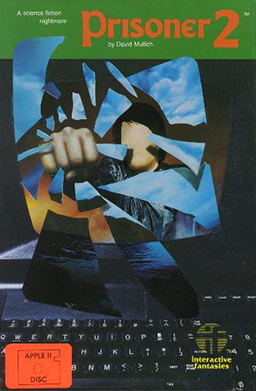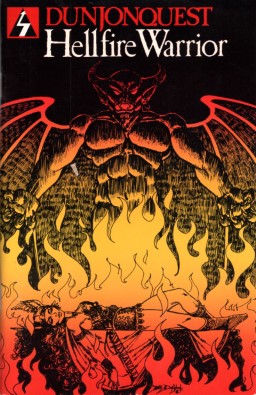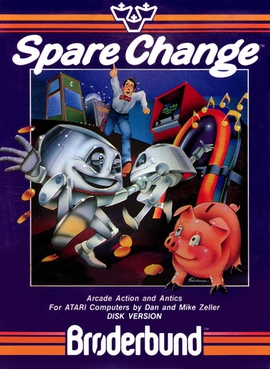
Beyond Castle Wolfenstein is a 1984 World War II stealth game. A direct sequel to Castle Wolfenstein, it is the second game in the Wolfenstein series, and the last installment to be released by original developer Muse Software before the name was revived for a first-person shooter in 1991. Castle Wolfenstein was written solely by Silas Warner for the Apple II, while the sequel was developed simultaneously for the Apple II and Commodore 64 by Warner, Eric Ace, and Frank Svoboda III. It was quickly ported to the Atari 8-bit computers and MS-DOS.

Softalk was an American magazine of the early 1980s that focused on the Apple II computer. Published from September 1980 through August 1984, it featured articles about hardware and software associated with the Apple II platform and the people and companies who made them. The name was originally used on a newsletter of Apple Software pioneer company, Softape, who in 1980 changed its name to Artsci Inc.
Penguin Software was a computer software and video game publisher from Geneva, Illinois that produced graphics and application software and games for the Apple II, Mac, IBM PC, Commodore 64, Amiga, Atari 8-bit computers, and Atari ST. It produced the graphics programs Graphics Magician and Complete Graphics System, graphic adventure games such as the Transylvania series, action games like Spy's Demise, and role-playing video games such as Xyphus.

Antic was a print magazine devoted to Atari 8-bit computers and later the Atari ST. It was named after the ANTIC chip in the 8-bit line which, in concert with CTIA or GTIA, generates the display. The magazine was published by Antic Publishing from April 1982 until June/July 1990.Antic printed type-in programs, reviews, and tutorials, among other articles. Each issue contained one type-in game as "Game of the Month." In 1986, STart magazine was spun off to exclusively cover the Atari ST line.

Super Invader is a fixed shooter video game written by Japanese programmer M. Hata for the Apple II and published by Creative Computing Software in November 1979. Super Invader is a clone of Space Invaders.

The Prisoner 2 is a video game published in 1982 by Edu-Ware. It is a remake of the 1980 game The Prisoner.

Many games, utilities, and educational programs were available for Atari 8-bit computers. Atari, Inc. was primarily the publisher following the launch of the Atari 400/800 in 1979, then increasingly by third parties. Atari also distributed "user written" software through the Atari Program Exchange from 1981 to 1984. After APX folded, many titles were picked up by Antic Software.
Softape was an Apple II software company that published computer games, utilities and productivity programs for the Apple II series of personal computers in the late 1970s and early 1980s. It was co-founded by William V. R. Smith, Bill Depew and Gary Koffler. In 1980, the company's name was changed to Artsci, Inc. (artscipub.com) and they now operate as an internet service provider as well as publish literature on amateur radio.

Beneath Apple Manor is a roguelike game written by Don Worth for the Apple II and published by The Software Factory in 1978. Higher resolution "Special Editions" were released in 1982 and 1983, through Quality Software, for the Apple II and Atari 8-bit computers. It was one of the first video games to use procedural generation.

Transylvania is an adventure video game published by Penguin Software. It was released for the Apple II in 1982 followed by ports to the Atari 8-bit computers and Commodore 64. A Mac conversion was published in 1984, then versions for the Amiga, Atari ST, and MS-DOS in 1985.

Preppie! is an action video game for Atari 8-bit computers published by Adventure International in 1982. It was programmed by Russ Wetmore of Star Systems Software, whose name is prominently displayed on the box cover. Leaning on the preppy trend of the early 1980s, the game follows prep schooler Wadsworth Overcash as he navigates the hazards of a country club to retrieve golf balls. Preppie! borrows heavily from Konami's Frogger, with lanes of traffic in the bottom half of the screen and a river crossing the top portion. Alligators are an element from both Frogger and preppy fashion; an open-mouthed gator is the icon of shirt brand Izod. Reviewers recognized the game as derivative, but called the music and visuals some of the best for Atari 8-bit computers.
Russ Wetmore is an American programmer and video game designer best known for writing commercial games and applications for Atari 8-bit computers in the early to mid 1980s. His Frogger-inspired Preppie! was published by Adventure International and praised by reviewers for the music and visuals. He also wrote the maze-game sequel, Preppie! II. Wetmore stopped writing games after the video game crash of 1983 and developed the integrated HomePak productivity suite for Batteries Included. He has remained in software development in director and architecture roles.

Hellfire Warrior is a dungeon crawl video game for the Apple II, Commodore PET, and TRS-80 published by Automated Simulations in 1980. A port to Atari 8-bit computers was released in 1982. Hellfire Warrior is the direct sequel to 1979's Temple of Apshai. Two expansion packs were published.

Dragon's Eye is fantasy role-playing video game published by Automated Simulations in 1981 for the Apple II, Atari 8-bit computers, and Commodore PET.

Empire of the Over-Mind is an interactive fiction game written by Gary Bedrosian and published by Avalon Hill for the Apple II, Atari 8-bit computers, and TRS-80 in 1981. A version with an enhanced display for IBM PC compatibles by Bedrosian was published in 1986.

The Queen of Phobos is a graphical text adventure for the Apple II published by American studio Phoenix Software in 1982.

Crystal Caverns is a text adventure written by Daniel Kitchen of American studio Imaginative Systems Software for the Apple II and published by Hayden Software in 1982. A Commodore 64 port was released in 1984.

Spare Change is an action game designed by Dan and Mike Zeller and published in 1983 by Broderbund for the Apple II and Atari 8-bit computers. A Commodore 64 version was written by Steven Ohmert and released the same year. Ports for FM-7 and Sharp X1 were released in 1985. The difficulty of Spare Change can be customized through seven settings at the "Zerks Control Panel".

Threshold is a space-themed fixed shooter written by Warren Schwader and Ken Williams for the Apple II and published by On-Line Systems in 1981. Inspired by Sega's Astro Blaster arcade video game, Threshold introduces many enemy ship types and wave formations as the game progresses. Reviewers found the variety distinguished the game from the many similar shoot 'em ups.
Margot Comstock was co-founder and editor of Softalk magazine, which was influential in the Apple II community, as part of a growing personal computing movement.
















